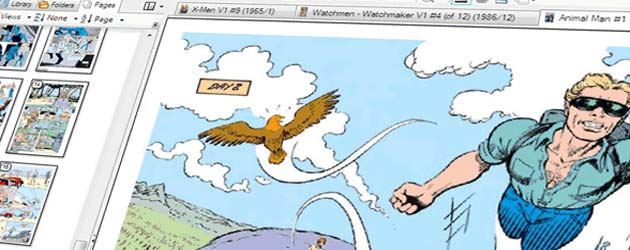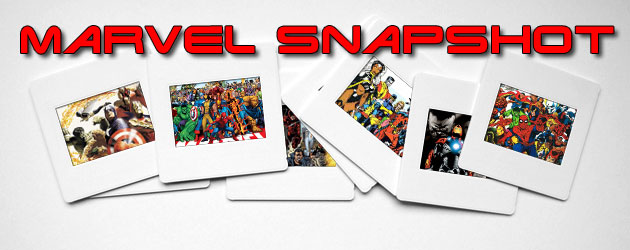We are living in what a number of well-meaning folks have dubbed “The Information Age.” Presumably due to the ever expanding, constantly upgrading, and seemingly limitless amount of features (apps, to use the parlance of our times) of the communication technology at work today, and all of the attendant devices on which it can be used. The Wonderful World of Comics, albeit a world unto itself, also exists in the realm of the so-called Real World.
In this article we will take a look at some of the various, new and old comic book reading formats and methods by which you can acquire comic books available today. The formats and methods discussed herein, while thoroughly researched, are really just the tip of the iceberg. Like pretty much everything else in or at least related to the communication technology world, comic book publishing, reading, and distributing exists in a state of constant, relentless change. New products and services are popping up every day. Heck, during the time it takes you to read this entire article, a new gadget or two has probably squeezed itself onto the market.
What is a Comic Book?
Ever since the first comic books started showing up in bookstores and on newsstands in the 1930s, the answer to the question above was fairly obvious and self-explanatory. But the advent and continued evolution of the internet and devices on which to access it has made the answer a little more difficult.
A simple, somewhat dated definition of a comic book could look something like this: A comic book has the same or similar appearance as a magazine. Its contents are made up of separate and sequential panels, which themselves contain artwork used to denote individual events in a story. These panels can also include additional storytelling devices, such as word balloons for dialog and thought balloons for…ah…thoughts, and artistically accentuated and punctuated text to indicate sound effects.
Of course, we still have the good, old traditional ink-stained pulp-style paper comic books, and hopefully we always will; however, we also have a variety of reading formats and purchasing options at our disposal these days. So, without further ado, here is a listing of some of the relatively new methods for you to check out, if for no other reason than to broaden your comic book horizons.
Reading Formats
Digital Comics: These are essentially digitized comic books formatted in such a way that they are compatible with special reading tools over the internet. Digital comics tend to look just like their kissing cousin, traditional ink-stained pulp comics, but use the mouse or keyboard to flip the pages instead of your hands.
Web Comics: You might also know these as internet comics or online comics. Web comics are often self-published comic strips, serial comics, or graphic novels posted on a website the artist creates specifically for this purpose.
Comic Strips: These are generally digital replicas of those anachronistic comic strips found mostly in newspapers (Remember those?). Comic strips share many of the characteristics of comic books and graphic novels (sequential art used to describe a situation or tell a story), however, they tend to be much shorter in length, consisting of one to about five or six panels.
Kevin P. Hanson
kevin@comicattack.net




